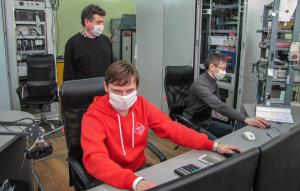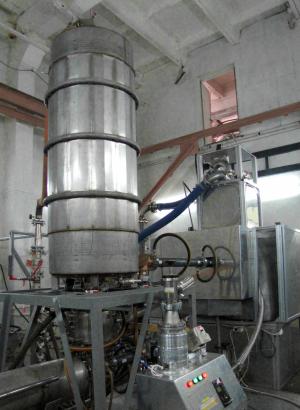Russia completes four
Gyrotrons (from the Greek "gyro" (circle) and "tron" (abstracted from electron) are the energy-generating devices of the electron cyclotron resonance heating system. Russia will supply eight of these devices in total, or one-third of the total installed capacity on the ITER machine. Late May, the fourth device in the series successfully passed factory acceptance testing.
From 25 May to 2 June, factory acceptance testing performed at GYCOM Ltd. (Nizhny Novgorod) demonstrated that, as with the first three in the series, the fourth gyrotron manufactured in Russia fully complies with the specifications of the ITER Organization. The tests—which were held in advance of the original calendar—were attended remotely by representatives of ITER Russia and the ITER Organization.
ITER will rely on electron cyclotron resonance heating to initiate each plasma shot, contribute 20 MW of heating power to the plasma, and suppress certain types of plasma instabilities. The demanding power and frequency requirements for the system (1 MW at 170 GHz for 1000 seconds) led to an ambitious, multi-decade development program in which Russia (through the Institute of Applied Physics and GYCOM Ltd), Japan, Europe and the United States—all contributing parties to the ITER electron cyclotron system—were closely involved. Since the signature of Procurement Arrangements with the ITER Organization, the gyrotron programs have gone through lengthy prototyping, review and test phases.
Eight gyrotron units need to be installed for ITER's First Plasma—four from Russia and four from Japan. (Sixteen other units will be installed after First Plasma.) Delivery of the first gyrotron pair from Russia is scheduled for mid-2021.



